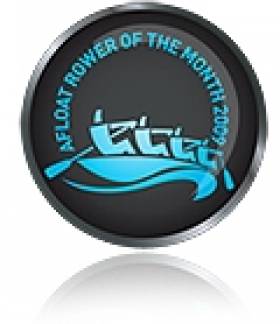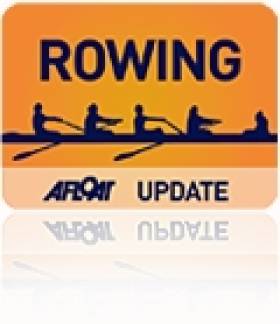Displaying items by tag: Leander
Cork Cups on Show on Leander's Special Day
#Rowing: The Leander Galleon, the trophy presented at Cork regatta each year, was on show with two other cups which have been on display in the Leander dining room at a special occasion at Trinity College. The three ‘Cork Cups’ were brought together on Irish soil for the first time in a century. There was a talk by rowing commentator Robert Treharne Jones.
The bicentenary of Leander was later marked by a dinner attended by the Minister for Justice and Equality, Charlie Flanagan, the president of Rowing Ireland, Eamon Colclough and Leander president Jeremy Randall. More than 60 Leander members dined in splendour at the Kildare Street and University Club.
Trinity Senior Eight are Afloat Rowers of the Month
#ROWING: The Afloat Rowers of the Month for June are Trinity’s men’s senior eight. The Dublin University Boat Club crew had a convincing win in the Division One final at Cork Regatta, outpacing UCD and NUIG/Gráinne Mhaol. They crew took the Leander trophy, one of the most impressive prizes on offer in Irish sport. Well done to: Gearóid Mahon, Ian Hurley, John Magan, Michael Corcoran, Patrick Moreau, Mark Kelly, Liam Hawkes, David Butler and cox Cian Flynn.
Rower of the Month awards: The judging panel is made up of Liam Gorman, rowing correspondent of The Irish Times and David O'Brien, Editor of Afloat magazine. Monthly awards for achievements during the year will appear on afloat.ie and the overall national award will be presented to the person or crew who, in the judges' opinion, achieved the most notable results in, or made the most significant contribution to rowing during 2015. Keep a monthly eye on progress and watch our 2015 champions list grow.
Leander Lead Way in London Fours Head
Leander’s elite quadruple scull were the fastest crew at the Fours Head of the River in London. The elite quadruple from Queen’s University started 22nd and finished 27th, while the men’s elite coxed four finished 147th and the women’s elite fours 314th.
Head of the River Fours, London, Saturday (Selected Results, Irish interest)
1 Leander Elite Quadruple 18 minutes 11.01 seconds; 27 Queen’s elite quadruple 19:20.05, 147 Queen’s elite coxed four 20:41.68, 314 Queen’s women’s elite fours 22:05.08.

























































